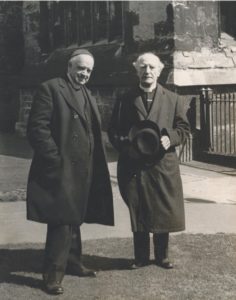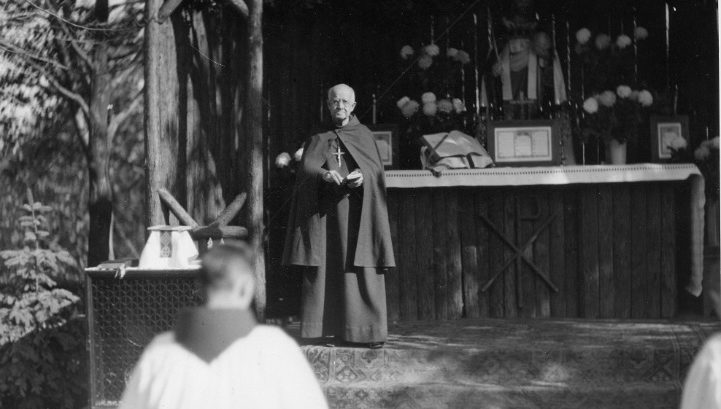Father Jim Loughran, SA, remembers January of 1982, in the Basilica of the National Shrine of the Immaculate Conception in Washington, D.C.
There were many Hierarchs, Friars and Sisters present. A choir sang hymns of praise.
Father Jim’s first-ever Week of Prayer for Christian Unity was indeed special, and not just because of the grandeur of the occasion.
“I was a new novice. It confirmed for me that I had joined the right congregation of Franciscans I was looking for in my life,” said Father Jim, the Friars’ Vicar General and First Councilor and Director of the Graymoor Ecumenical and Interreligious Institute. “We have a clear and firm purpose: the visible unity of all Christians.”
The Week of Prayer for Christian Unity is an eight-day period of universal solemnity, designed to pray for Christian harmony in a unique way. Its history spans 114 years – and its roots began in the holy mountain of Graymoor.
Father Paul Wattson, SA, and Mother Lurana White, SA, were the innovators of the Week of Prayer for Christian Unity, which has evolved into an annual ecumenical celebration. During the week, Christians are called to pray for unity within the faith, reflect on scripture and participate in communal services.
The celebration is conducted each year with a different religious theme. The theme for 2022, which will take place January 18-25, is “We saw the star in the east, and we came to worship him,” taken from the story of the Epiphany in the second chapter of Matthew’s Gospel.
“One of the benefits of the themes has been the ability of people to take a cause, a notion that is going to bring the church more visibly into the world, by making the church much more relevant to the needs of people today,” said Father Jim said.
The concept began in 1907 with correspondence between Father Paul and The Reverend Spencer Jones, a clergyman from Moreton-in-Marsh, England. Jones suggested a day be reserved for prayer for Christian unity. Father Paul agreed, but expanded upon the idea, suggesting it be an octave, or stretch of eight days.
 A year later, Father Paul and Mother Lurana, Episcopalians at the time, began the Week of Prayer. Father Paul initially termed it the “Church Unity Octave,” observed between January 18, the Feast of the Confession of Saint Peter, and January 25, the Feast of the Conversion of Saint Paul. The celebration was recognized by Pope Pius X, and in 1916, Pope Benedict XV broadened its observance to the universal church.
A year later, Father Paul and Mother Lurana, Episcopalians at the time, began the Week of Prayer. Father Paul initially termed it the “Church Unity Octave,” observed between January 18, the Feast of the Confession of Saint Peter, and January 25, the Feast of the Conversion of Saint Paul. The celebration was recognized by Pope Pius X, and in 1916, Pope Benedict XV broadened its observance to the universal church.
The name officially changed to the Week of Prayer for Christian Unity in 1963.
Several countries, including Switzerland and France, developed their own version of the Week of Prayer for Christian Unity. Countries throughout the Southern Hemisphere found different times to celebrate the Week of Prayer, typically each year between the Feast of the Ascension and Pentecost.
The concept further evolved in 1948, when the newly founded World Council of Churches recognized the week and different churches across the world increasingly celebrated it.
In 1966, common international texts for each Week of Prayer for Christian Unity were developed for all to use every year. Two years later, those texts began being published for use in the United States by the Graymoor Ecumenical and Interreligious Institute.
In 2008, the Week of Prayer for Christian Unity celebrated its centennial, with the theme of “Pray without ceasing,” taken from the first letter of Paul to the Thessalonians.
Conducted with a different theme each year, 2020’s theme came from the Acts 28:2 passage, “They showed us unusual kindness.” Last year’s theme was, “Abide in my love and you shall bear much fruit,” taken from John 15:5-9.
“It connects us all with the insight and charism of Father Paul and Mother Lurana as well as all the Friars and Sisters who have gone before us,” Father Jim said of Week of Prayer. “Above all else, it reminds us year after year of the hand of God at work in our efforts and of our utter reliance on the Holy Spirit to bring about reconciliation and unity, At-One-Ment.”

